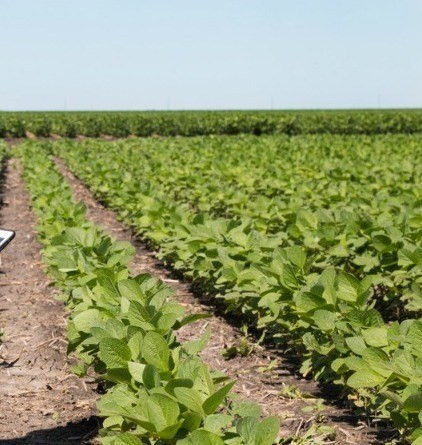Restoring Profitability to Ag Production
- Shane Peed
- Mar 15, 2020
- 4 min read
Many people have tried to re-establish profitability of agricultural operations in various areas of the world. Most have failed for some very fundamental reasons.

To have a profit in an agricultural operation anywhere in the world requires establishing a balance between the potential output of the selected region and the cost of producing that output. Most investors have been led to believe that throwing large sums of money into modernized equipment and Western chemicals, fertilizers and seeds should solve the problem and produce a substantial profit.
Profitability of Agricultural Production
The first step should be an in-depth and careful analysis of the target area. Starting with soil profiles and analysis, weed spectrums and the available methods of control, fertilizer supplies and quality, irrigation capabilities and then, when all those things are known, you can begin to analyze what crops will grow in the selected area.
Many areas produce a specific crop because it is their “tradition”, with no idea of profitability or actual costs. In many cases, the traditional crops are not best to the climate in which they are going to grow. As these states convert to a driven market economy, they must also determine what they can produce at a profit, consistently.
Preparation & Analysis
1. To prepare to raise a crop, you need to know the history of the land. Also, you need to assess the damage done by incorrect farming practices and long-term damage from irrigation. You need to do a soil properties profile, determine what the nutrient exchange capacity of the soil is. And then decide how long it will take to restore that land to an arable condition.
Understanding those three steps will then help you determine if you can recover the cost of restoration by subsequent cropping of that soil. This includes the possibility of installing different tillage methods altogether, more efficient irrigation and even complete systems of rotation and cropping that produce a synergism when you do the rotation in a specific pattern. The list of variables that need to be addressed is quite lengthy and can be quite involved. The point of this is that crop selection is impossible until you do this necessary homework.
Factors which paint a picture of what crop is suitable are the following:
Rainfall
Irrigation
Number of heat units during the frost-free period
Number of daylight hours accumulated during this frost-free period
Presence of any catastrophic elements like diseases
Insects that are indigenous to an area
Cost-effective means to control or diminish the effect of pest/host relationships
2. If you can select a crop and make a crop production plan, you have to consider the seed sources and the genetics of the crops that you want to plant. In some cases, such as wheat, the available seed sources are fifteen (15) generations old. The original breeding did not have adequate heterosis to produce a yield high enough to support any additional costs associated with improved farming practices.

The only cure for some of these problems is the introduction of new breeding material. It will help to enhance the yield potential of the particular crop. In most cases, it takes a minimum of 5 generations of selection and cross-breeding to develop a new variety from originally paired crosses. When considering this, it is also good to remember the protective import regulations of most countries. Especially when it comes to seed stocks and genetic materials. This has to be approached on a case-by-case basis. And in any event, it is a long-term process.
3. The idea of going into an area to produce a crop that is selected by a board of directors meeting is ludicrous. There must first be a thorough study of what is possible and what is practical.
Production & Marketing
If you perform the first phase of preparing to raise a crop, then you must decide, based on several other criteria what crop to raise. Actual tillage, seeding and harvesting equipment, fuel supplies, spare parts and access to these implements is the next crucial barrier. In many formerly “State” sponsored ag programs there are no clear guidelines for ownership or access to use of equipment by a “private enterprise”. So things go into a limbo state. Setting idle waiting for a decision by some bureaucratic entity regarding whether “State” owned equipment can be used, rented, bought or sold.
The primary criteria for any crop are access to the market, with a cumbersome and often corrupt internal market system. Any yield you get can be a failure by excessive expenses because of marketing. A simple, effective path to the marketplace is essential; a market, which gives some protection against currency fluctuations, is also necessary.
Conclusion
My advice to anyone with the intention of investing in agricultural production is to be aware that you can not skip any of these steps. The entire concept goes together in a package, and shortcutting any part of it you will fail.
Now, with that said I could also say that if done correctly, and carefully implemented a well-financed effort should be able to re-establish profitable operations and more importantly maintain it at a reasonable level of profit by managing the costs and using the applied technologies that are available.
To make the initial determination of suitability of an intended program a thorough feasibility study needs to be done by people who are qualified to make such a decision. This type of research should take several months, one crop season at least. And the kind of expertise needed will not come cheap. Attempted on a much shorter time-scale, the people need to generate some very accurate “best guesses”. And then hope to improve on them in subsequent cropping seasons. However, trying to resurrect an ag operation based on an academically derived plan will be very likely to fail. And cost much more in the long term.


Comments